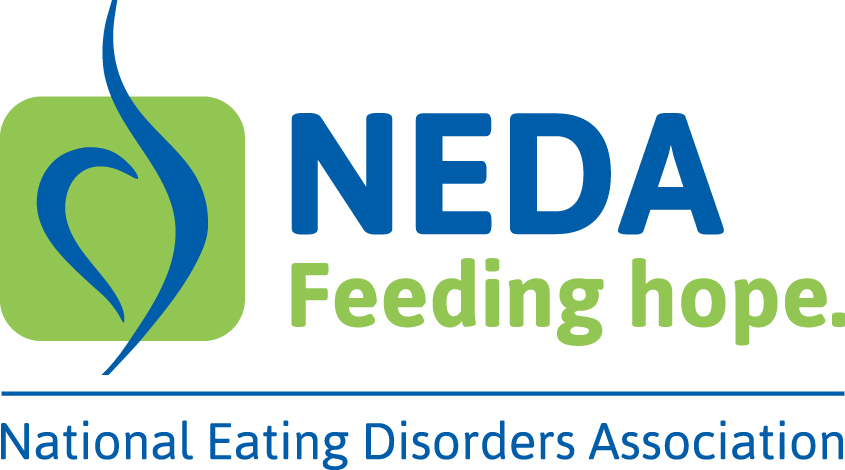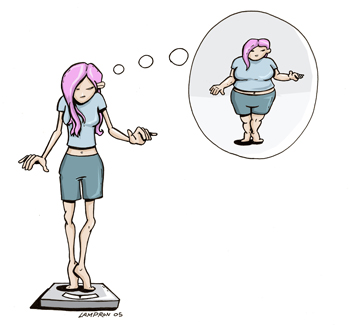 Though anorexia, bulimia and compulsive exercise are rampant across genders, we want to focus this particular blog on female athletes. According to research, more than 1/3 of female college athletes have some type of disordered eating, with significantly higher rates of eating disorders found in elite athletes. A comparison of the psychological profiles of athletes and those with anorexia found these factors in common: perfectionism, high self-expectations, competitiveness, hyperactivity, repetitive exercise routines, compulsiveness, drive, tendency toward depression, body image distortion, and pre-occupation with dieting and weight. You yourself or someone you know might possess a few or many of these traits in the casual to competitive running world and not identify as someone involved in disordered eating. That’s great. But it’s hard to dismiss the likelihood or seemingly inevitable pondering of “What if?” “Could I be better?” “Could I get faster?” when we (generally) possess most of the aforementioned attributes, and not think about weight, body composition and size in relation to other female athletes. It takes a strong and confident person to stand on a starting line and not assess differences, or, be able to assess differences without eroding belief of self.
Though anorexia, bulimia and compulsive exercise are rampant across genders, we want to focus this particular blog on female athletes. According to research, more than 1/3 of female college athletes have some type of disordered eating, with significantly higher rates of eating disorders found in elite athletes. A comparison of the psychological profiles of athletes and those with anorexia found these factors in common: perfectionism, high self-expectations, competitiveness, hyperactivity, repetitive exercise routines, compulsiveness, drive, tendency toward depression, body image distortion, and pre-occupation with dieting and weight. You yourself or someone you know might possess a few or many of these traits in the casual to competitive running world and not identify as someone involved in disordered eating. That’s great. But it’s hard to dismiss the likelihood or seemingly inevitable pondering of “What if?” “Could I be better?” “Could I get faster?” when we (generally) possess most of the aforementioned attributes, and not think about weight, body composition and size in relation to other female athletes. It takes a strong and confident person to stand on a starting line and not assess differences, or, be able to assess differences without eroding belief of self.
With it being National Eating Disorders Awareness Month, there’s been a lot of literature regarding “disordered eating” as an identification as opposed to, or in combination with having an “eating disorder.” I wanted to really nail down how each are identified for you here. Best said, in an article titled, Disordered Eating or Eating Disorder: What’s the Difference? by Carrie Gottlieb, Ph.D., Gottlieb writes,
“It’s pretty easy to diagnose a full-blown eating disorder like Anorexia or Bulimia Nervosa. But more subtle forms of disordered eating are difficult to pinpoint. In our culture there is an obsession with size and weight, diet and exercise-the pervasiveness of disordered eating is astounding. Research suggests that up to 50% of the population demonstrate problematic or disordered relationships with food, body, and exercise. Rates of clinical eating disorders are much lower, estimated from 1% to 3% of the general population.
There are four diagnoses of eating disorders in The Diagnostic and Statistical Manual of Mental Disorders-V (DSM-V), Anorexia Nervosa, Bulimia Nervosa, Binge Eating Disorder, and Eating Disorder Not Otherwise Specified. Specific diagnostic criteria are listed for each of the four diagnoses. However, falling short of meeting these criteria does not mean a person is maintaining a healthy relationship with food and weight. Individuals who demonstrate disordered eating may still be at risk both physically and emotionally.
Defining and recognizing disordered eating is a complicated issue. What are the signs and symptoms of disordered eating? How do you distinguish disordered eating from an actual eating disorder or even from more normative dieting behaviors? And what can be done to treat these behaviors once they become a problem?
Symptoms of disordered eating may include behavior commonly associated with eating disorders, such as food restriction, binge eating, purging (via self induced vomiting or excessive exercise, and use of diet pills and/or laxatives). However, disordered eating might also include:
- Self worth or self esteem based highly or even exclusively on body shape and weight
- A disturbance in the way one experiences their body i.e. a person who falls in a healthy weight range, but continues to feel that they are overweight
- Excessive or rigid exercise routine
- Obsessive calorie counting
- Anxiety about certain foods or food groups
- A rigid approach to eating, such as only eating certain foods, inflexible meal times, refusal to eat in restaurants or outside of one’s own home
What distinguishes disordered eating from a full-blown eating disorder? It is all about degree. An individual with disordered eating is often engaged in some of the same behavior as those with eating disorders, but at a lesser frequency or lower level of severity. However, disordered eating is problematic and to be taken seriously, though the symptoms might bot be as extreme as those of a diagnosable eating disorder. Individuals with disordered eating may be at risk for developing a full-blown eating disorder and are more likely to have a history of depression and/or anxiety, or be at risk for anxiety and depression at some point in the future.
As with other mental health issues, it is important to explore how and to what extent disordered eating is affecting an individual’s daily functioning. Issues to consider include the following:
- Concentration and ability to focus – do thoughts about food, body and exercise prevent concentration or impede performance at work/school?
- Social life – is socializing restricted because it might require eating in a restaurant, consumption of foods that are scary or uncomfortable, or disruption of exercise routine?
- Coping skills – Is food consumption and/or restriction used as a way to manage life’s problems or cope with stressors?
- Discomfort or anxiety – How much discomfort do thoughts of food and body cause? Are these thoughts hard to shake and anxiety provoking?
A mental health professional can help to distinguish between disordered eating, eating disorders, and more normative diet and exercise patterns and determine whether you might be at risk.”
Read more HERE.
With National Eating Disorders Awareness Week having just concluded (Feb. 21-27), we wanted to compile a list of resources and excellent write-ups women in sports have posted this year regarding the topic of eating disorders:
1. From Sarah Crouch, pro runner for Reebok/ZAP Fitness; originally published in Bellelap.com and picked up by Competitor.com – Hopeful, Hungry and Chasing a Lie: Disordered Eating in Distance Running. Also by Crouch, articles posted in Runners Connect: Amenorrhea and Running: Is it Normal for Female Runners to Miss Their Period?
2. Protect Yourself from Bone Loss and the Female Athlete Triad – Avoiding the Athletic Amenorrhea Cascade
3. How to Improve your relationship with food to become a happy and healthier runner
4. Finding the Best Anorexia, Bulimia and Eating Disorder Treatment for Athletes
5. Eating Disorder Recovery in Female Athletes
6. Eating Disorders in Female Runners (incl. radio show)
The goal of National Eating Disorders Awareness Week (#NEDAwareness) was to put the spotlight on eating disorders and improve public understanding of their causes, dangers and treatments. By increasing awareness and access to resources, we can encourage early detection and intervention. Eating disorders have the highest mortality rate of any mental disorder, and early intervention can save lives. This year at NEDA they focused on the importance of early detection and encourage the public to take a 3 minute screening online to help determine your level of struggle regarding food or exercise. The screening is free and confidential. If interested, please take it HERE.
In conclusion, so many of us have suffered, are suffering, or know someone who is. The hardest part is to admit that you need help, especially if you possess the strong qualities associated with most athletes as listed above (perfectionism, high self-expectations, competitiveness, hyperactivity, compulsiveness, drive, etc.), but it is so important to talk about this, to share your story and your struggle/s with someone you trust or in seeking professional help, because the truth is, you won’t last long, and all we want, as your sisters in sport, as your community, is to run and race alongside you for a really long time, for a lifetime.
More questions?
National Eating Disorders Helpline: 800.931.2237
NEDA offices: 212.575.6200
General inquiries: info@nationaleatingdisorders.org
*Feel free to contact Bellingham Distance Project with any questions or concerns at bellinghamdistanceproject@gmail.com
